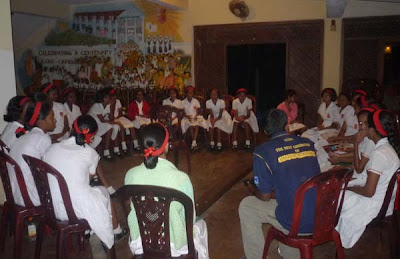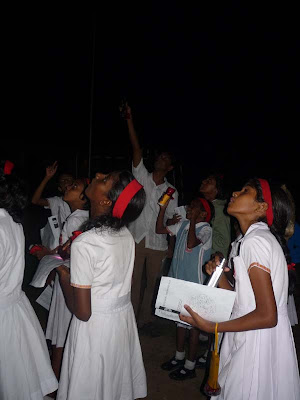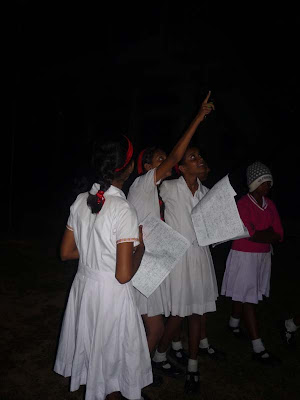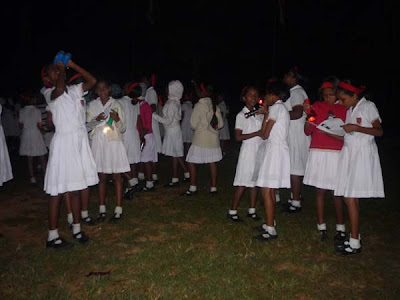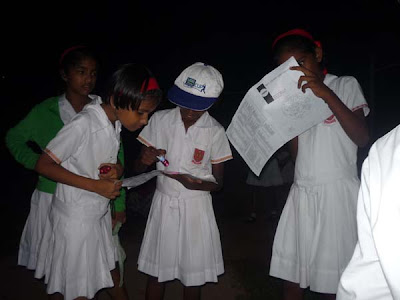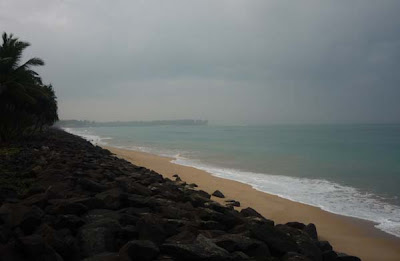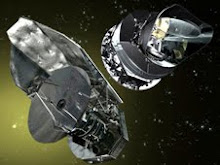By
Dr Noorali JiwajiDuring the seven days from Sunday April 4th to Saturday April 10th star enthusiasts all over the world will be marking the
International Dark Sky Week by raising the awareness of the danger of losing the darkness of the night skies. They are concerned that with each passing day, as people struggle to progress and use more and more lights, they are in fact destroying the natural environment of night.
Most of the lights that are fitted outside the house leak their light upwards into space. Any light that goes up into the skies is a waste of valuable energy, thus adding to the miseries of climate change. Leaky lights also contribute to increasing light pollution of our skies. This type of pollution is a more recent phenomenon resulting from our growing affluence. It causes our night skies to brighten so much as to appear to be almost like day time. We need to darken skies to see the beautiful views of stars which are the windows through which we can enjoy, understand, and appreciate our vast Universe.
The aim of the
International Dark Sky Week is to educate the public to save precious energy by installing lights in such a way that they always face downwards, allowing us to see our way and to protect us from intruders. This is a simple action that does not cost any money and in fact can save money, because if all light from a fitting shines downwards, none of it will be wasted by leaking upwards. Hence, one will need less powerful bulbs and thereby save energy and money.
When large open premises are lit, their lights will have to point almost horizontally. In this case there is a need to shade the top of the light so that no light leaks upwards and is in fact reflected back towards the ground where it is needed.
Any light that leaks upwards into the atmosphere causes light pollution. Though air is mostly transparent, some light is always scattered back towards the ground, especially when there are clouds and where the atmosphere is already polluted with smoke and dust. In such skies, when there are huge numbers of lights leaking upwards, the whole atmosphere can become practically bright as day. We call this “light pollution”, since it destroys the darkness of the skies above us, and except for the Moon and a few very bright planets and stars, it will prevent us from watching most of the wonders of the night skies.
There are now more people living in cities than in rural areas. Cities everywhere are fully lighted with most light leaking skywards. Even now, most of the people in the developed world are not able to see stars from their backyards because of uncontrolled lighting in their cities.
We in Africa, and in particular in Tanzania, are fortunate to have fewer lights and thereby, very dark skies. The map of the world at night from space shows how much of the land surface is carpeted with light in the developed countries. Such places are so lighted that in the night view from a satellite, it is easy to see the boundaries of those countries!!
Fortunately we are at that stage in our development where we can be completely aware of the wastefulness and dangers of using more lights than absolutely necessary. We can control installation of lights right from now to make sure we use the minimum number of lights with all of them shining downwards only.
We are also in a position to offer
“Dark Sky Reserves” where we can attract tourists from the developed world who thirst to see the stars in truly dark skies. Our national parks, besides protecting the animals, can be targeted to protect the dark skies too by banning unnecessary lighting and making sure that all lights point downwards.
By maintaining the pristine nature of our environment, both on the ground and in the skies we will be able to promote cultural tourism and this new astro-tourism, where tourists can taste the celestial delights that they have lost in their own countries.
We need to map our night skies throughout Tanzania so that we can quantify the light pollution levels using the
Bortle Dark-Sky Scale. We can then demarcate specific areas that would be suitable for astro-tourism and others for attracting scientists to be able to do ground based astronomy observations and research.
Tour and wildlife guides can be trained in basic astronomy, and telescopes can be placed in hotels and observing sites. Tourists can thus relax at night and enjoy the wonders of our dark skies after the day’s pleasures watching exotic game and other natural wonders.
An astro-tourist site at
Mbozi - sixth largest meteorite - in southern Tanzania would attract even more tourists, since the sixth largest meteorite in the world lies there. Tanzania is also well placed near the equator so that almost the entire sky can be viewed in one night. We also have conducive weather because of our savannah climate, with regular clear nights, especially in semi-arid regions of our country.
April is an eventful month for dark sky awareness. It is the
Global Astronomy Month and has followed very soon after the
Globe at Night activity in March, when ordinary people all over the world went out in their neighborhoods to measure light pollution of their skies using simple observations. More than 15,000 observations were received world wide.
Immediately after the end of this
International Dark Sky Week, there follows the “
World Night in Defence of Starlight” on April 20th. This is of most significance to those who have lost their right to observe nature’s beauty in the night skies and are fighting to regain it by reducing light pollution. Let us not fall into the same trap, and so make concrete efforts to save our night skies both for ourselves and for the coming generations. This can at the same time benefit economically by promoting astro-tourism in Tanzania.



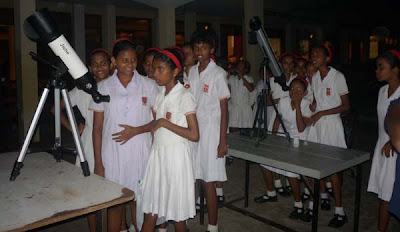

 Dimuth Prasad giving a talk
Dimuth Prasad giving a talk


